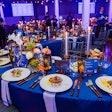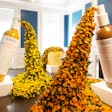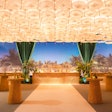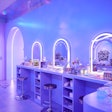In an era when any tech-savvy hipster with an iPod or a computer can fancy himself a DJ, music marketing company and record label Spring L.L.C. wanted to separate the Mobys from the wannabes. The result was the 2007 Nikon “Four to the Floor” tour, a five-city event designed to showcase new DJ talent in an upscale nightlife environment.
“Dance music has always been kind of the bastard child of music,” says Michael Aiken, Spring’s managing partner. “From a musicianship standpoint, it’s never gotten the respect that jazz or even hip-hop gets ... but there’s a lot of musicianship in the space. These guys are artists in their own right. So the idea was, let’s separate the real artists from everybody [who’s just] spinning records, and give them a platform that recognizes and celebrates that artistry.”
With that idea in mind, Spring approached Nikon to sponsor the tour and further develop the concept. For Nikon, an event that would attract and help make the brand accessible to a hip, young demographic was ideal, and fit with the company’s marketing and promotional goals.“Spring has previously developed branded music experiences that Nikon thought would tie in very well with our objective to reach a younger audience,” says Lisa Baxt, senior manager of communications for Nikon Inc. “Whether you are listening to music or taking pictures, music and photography are based on experiences that have a lasting effect on a consumer’s affiliation with that event or memory. The experience is the synergy that ties Nikon to music and to the Four to the Floor program.”
At each stop on the tour, which began in Chicago in September, Spring booked an upscale nightspot that was more intimate than the typical cavernous dance club and revamped it to evoke an international hotspot like St. Tropez or St. Barts. Choosing the venues was one of the challenges involved in the tour, Baxt says. “The venue has a lot to say about the type of event you are putting on, as well as attracting the crowd,” she says. “Nikon wanted an exciting and hip venue that would match the music experience while enticing the consumers to sign up to come to the event. And while the consumers are on-site, it was important to brand the venue in ways that integrated seamlessly into the venue and maintained the atmosphere and overall tone of the event.”
“The key was to tailor the experience to the sensibilities of the local market but keep the overall experiential feel consistent,” Aiken says. Each venue—Enclave in Chicago, Buddha Bar in New York, Ruby Skye in San Francisco, Cabana Club in Los Angeles, and Opium Garden in Miami—shared elements such as a yellow (instead of red) carpet that attendees posed on for photographs, and illuminated product displays featuring Nikon’s newest digital cameras throughout the space.
A sophisticated ambience was also a consistent element. “The whole point was to convey a nightlife theme that was unexpected,” Aiken says. “Dance music is expected to be in big clubs, with bare-chested, Red Bull-drinking kids, but there’s a sophisticated market, too. We wanted people to immediately know they hadn’t experienced this kind of music in this environment before.” So each venue included comfortable lounge areas and avoided signage. “We stay away from signage—it’s too static and almost intrusive,” Aiken says. Instead, brand messages were conveyed through projection and a dynamic entertainment reel.
And, of course, there was music. Each venue featured two up-and-coming DJs who, in addition to spinning records on their own, performed in “mash-ups” with live musicians such as saxophone player Mike Phillips. Dance guru Hosh Gureli served as an executive producer of the event and selected the DJs.
On November 7, the tour made its last stop, in Miami. But that’s not the end: This winter, Spring is set to release a full-length CD, Four to the Floor Volume I, that showcases DJ-producers and dance remixes.
“Dance music has always been kind of the bastard child of music,” says Michael Aiken, Spring’s managing partner. “From a musicianship standpoint, it’s never gotten the respect that jazz or even hip-hop gets ... but there’s a lot of musicianship in the space. These guys are artists in their own right. So the idea was, let’s separate the real artists from everybody [who’s just] spinning records, and give them a platform that recognizes and celebrates that artistry.”
With that idea in mind, Spring approached Nikon to sponsor the tour and further develop the concept. For Nikon, an event that would attract and help make the brand accessible to a hip, young demographic was ideal, and fit with the company’s marketing and promotional goals.“Spring has previously developed branded music experiences that Nikon thought would tie in very well with our objective to reach a younger audience,” says Lisa Baxt, senior manager of communications for Nikon Inc. “Whether you are listening to music or taking pictures, music and photography are based on experiences that have a lasting effect on a consumer’s affiliation with that event or memory. The experience is the synergy that ties Nikon to music and to the Four to the Floor program.”
At each stop on the tour, which began in Chicago in September, Spring booked an upscale nightspot that was more intimate than the typical cavernous dance club and revamped it to evoke an international hotspot like St. Tropez or St. Barts. Choosing the venues was one of the challenges involved in the tour, Baxt says. “The venue has a lot to say about the type of event you are putting on, as well as attracting the crowd,” she says. “Nikon wanted an exciting and hip venue that would match the music experience while enticing the consumers to sign up to come to the event. And while the consumers are on-site, it was important to brand the venue in ways that integrated seamlessly into the venue and maintained the atmosphere and overall tone of the event.”
“The key was to tailor the experience to the sensibilities of the local market but keep the overall experiential feel consistent,” Aiken says. Each venue—Enclave in Chicago, Buddha Bar in New York, Ruby Skye in San Francisco, Cabana Club in Los Angeles, and Opium Garden in Miami—shared elements such as a yellow (instead of red) carpet that attendees posed on for photographs, and illuminated product displays featuring Nikon’s newest digital cameras throughout the space.
A sophisticated ambience was also a consistent element. “The whole point was to convey a nightlife theme that was unexpected,” Aiken says. “Dance music is expected to be in big clubs, with bare-chested, Red Bull-drinking kids, but there’s a sophisticated market, too. We wanted people to immediately know they hadn’t experienced this kind of music in this environment before.” So each venue included comfortable lounge areas and avoided signage. “We stay away from signage—it’s too static and almost intrusive,” Aiken says. Instead, brand messages were conveyed through projection and a dynamic entertainment reel.
And, of course, there was music. Each venue featured two up-and-coming DJs who, in addition to spinning records on their own, performed in “mash-ups” with live musicians such as saxophone player Mike Phillips. Dance guru Hosh Gureli served as an executive producer of the event and selected the DJs.
On November 7, the tour made its last stop, in Miami. But that’s not the end: This winter, Spring is set to release a full-length CD, Four to the Floor Volume I, that showcases DJ-producers and dance remixes.
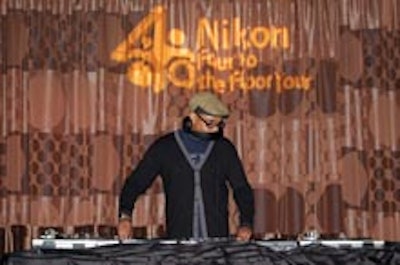
Lorne Peart was among the DJs on tour.
Photo: Andrew George
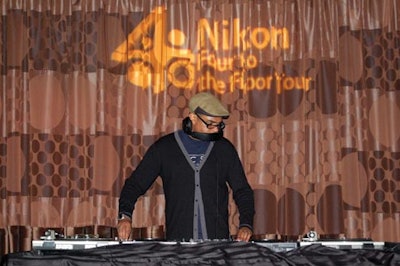
DJ Lorne Peart performed at Enclave in Chicago.
Photo: Andrew George

Guests at each event could get DJ lessons from pros.
Photo: Andrew George
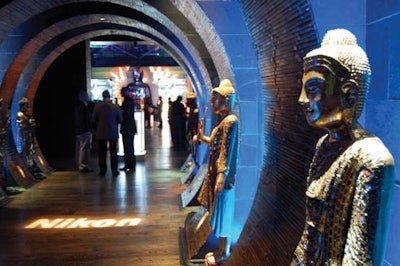
Four to the Floor stopped at Buddha Bar in New York.
Photo: Andrew George
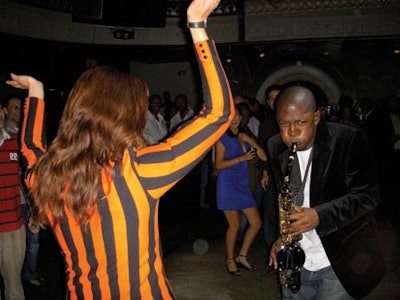
Saxophonist Mike Phillips performed at each of the five tour stops.
Photo: Andrew George















